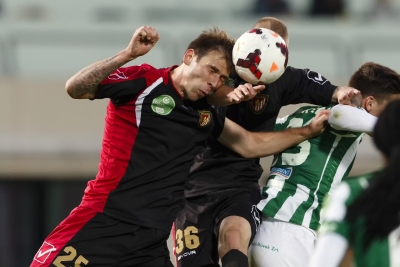
IT'S A BEAUTIFUL THING when we can bring together the world's most foremost sports medicine specialists and researchers to talk about and review the research on a particular topic. Such was the case in 2017 when we gathered for a head injury summit in New York. And now, The British Journal of Sports Medicine has released a 10-plus page article of the consensus findings of that important meeting. It's a fantastic read for us clinicians – our hard work, hours of research and clinical outcomes all distilled down to digestible stats and summaries. But I believe this is essential material for public consumption, as well. Head injuries and sports-related concussions are prevalent in any collision sport (including soccer), and even in some sports that don't categorically involve a collision. Contrary to what many believe, American football isn't the only sport that puts a player in danger of sustaining a concussion.
At each play level, from youth to high school, collegiate to professional, head injuries and concussions are an issue. But how these injuries manifest is worth a look. In youth and high school soccer athletes, a concussion is the second most common injury sustained during match play. The consensus data also indicates that the rate of concussion injury in this player population was on a steady incline year over year from 2006 until roughly around 2011, when it began to plateau. The hypothesis is that better education and greater awareness, in addition to earlier symptom recognition and reporting, are at least partially responsible for this leveling off of injury. One interesting finding from this summit that is worth noting, particularly in youth and high school soccer players, is that three-quarters of the concussions in this population occurred when the player was not aware that contact or collision was coming. When collision was unexpected, and a concussion resulted, the result was a longer duration of concussion symptoms than in those players who were aware that a hit was imminent.
Another particularly disturbing finding that was revealed by research at this summit was that up to 40 percent of youth soccer players indicated that they wouldn't report their concussion symptoms to anyone. This statistic is of particular concern to physicians and should be to parents of young athletes, as well, for the data tell us that continued play after concussion in children ages 12 to 18 is associated with significant delays in symptom recovery.
At the collegiate level, as awareness has increased, so have the rates of concussion. Though this statistic may seem like a bad thing, anytime education "works" and signs/symptoms are recognized earlier, there tends to be an uptick in reporting of injuries, and the expectation would be that this would level off over time and that the concussion injury rate would decrease. Another interesting finding from the summit, with particular regard to collegiate soccer players, is the rate of concussion injury among male and female athletes. For collegiate men, NCAA data show that concussion incidence in soccer still trails the pace of wrestling, American football and ice hockey. For female collegiate players, on the other hand, concussion rates for this cohort are only eclipsed by ice hockey. By comparison, women have a higher percentage of head and face injuries during a soccer match than their male counterparts.
Concussions are the fifth most common injury type among Major League Soccer players, and though most of the contacts that result in concussion occur with a player from an opposing team, some are with a teammate. In pro soccer athletes, defenders who developed concussion injuries more frequently than players in other positions, and concussions were also more likely to occur within the first half hour and last half hour of a match. In tournament play, we again saw a marked increase in the development of concussion among female athletes than male players. In women, the catalyst for injury was usually a head-to-head impact, and in men, it was an elbow-to-head impact.
